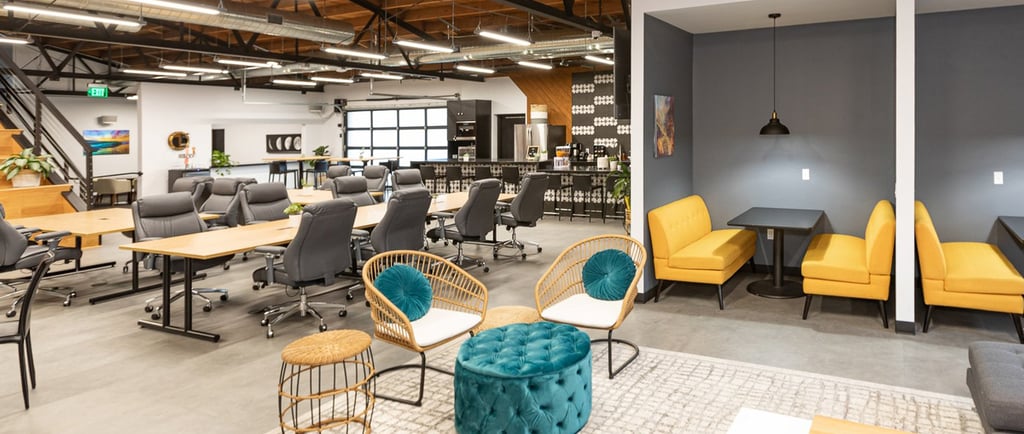Smart Workspace: Office Design for Productivity
Understand how well-planned office layouts, modern interiors, and space optimization can boost team efficiency, employee morale, and business scalability.
K Hemant
5/15/20252 min read


In the ever-evolving world of work, productivity is no longer just a result of hard work—it's a byproduct of smart design. Whether you're running a startup, managing a remote-friendly company, or redesigning your corporate HQ, the way you design your office plays a vital role in how efficiently your team works. A smart workspace isn't just aesthetically pleasing—it’s strategically structured to boost focus, encourage collaboration, and support employee well-being.
What Is a Smart Workspace?
A smart workspace goes beyond traditional office layouts. It’s a blend of intelligent design, flexible infrastructure, and technology integration aimed at improving employee experience and operational efficiency. Think ergonomic furniture, adjustable lighting, collaborative zones, quiet areas, and seamless tech support—all working together to enhance how people perform.
Why Office Design Matters
Studies have consistently shown that well-designed workspaces can lead to a significant increase in employee productivity, satisfaction, and even retention. Here’s how smart office design makes a difference:
Reduces Distractions: Acoustic panels, quiet pods, and noise-canceling layouts help eliminate disruptive noise.
Boosts Morale: Natural light, biophilic design, and breakout spaces create a more enjoyable environment.
Encourages Collaboration: Open areas and modular meeting spaces make teamwork fluid and organic.
Supports Flexibility: Spaces designed for hybrid or activity-based work models allow employees to choose where and how they work.
Key Elements of a Smart Workspace
1. Zoned Layouts
Divide the office into dedicated zones: focus zones, collaboration zones, lounge zones, and call pods. This allows employees to choose the environment that suits the task at hand.
2. Ergonomic Furniture
Invest in chairs with lumbar support, adjustable desks, and monitor stands to reduce physical strain and improve comfort during long hours of work.
3. Technology Integration
Use tools like wireless charging stations, smart boards, occupancy sensors, and cloud-connected conferencing systems to streamline work processes.
4. Natural Light & Air Quality
Good lighting improves mood and energy levels. Access to windows, air purifiers, and indoor plants contributes to better cognitive function and lower stress.
5. Flexible Workstations
Incorporate hot-desking options and mobile workstations for employees who prefer variety or remote workers dropping in occasionally.
6. Quiet & Wellness Rooms
Dedicated spaces for short breaks, meditation, or even power naps help recharge mental batteries and prevent burnout.
Trends in Smart Office Design
Hybrid Work Adaptation: Offices are being reimagined as collaboration hubs rather than 9-to-5 desk farms.
Sustainable Materials: Eco-friendly design choices appeal to environmentally conscious teams and reduce carbon footprints.
AI & IoT in Office Management: Smart lighting, climate control, and usage data help optimize space and reduce utility costs.
Color Psychology: Colors like blue (calm and focus), green (balance and wellness), and yellow (creativity and energy) are being used strategically.
Final Thoughts
A smart workspace isn’t just about sleek furniture or open layouts—it’s about designing a dynamic environment that adapts to the needs of your team and aligns with your business goals. Whether you're renovating your office or setting up a new one, think about how the space can inspire, energize, and support the people who work within it.
